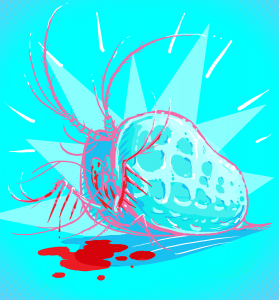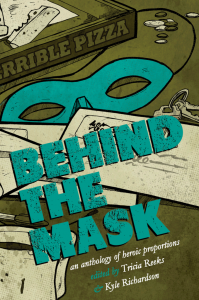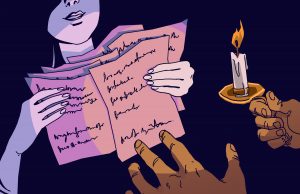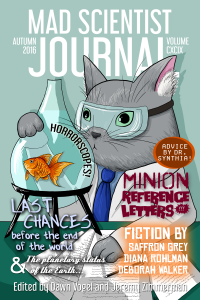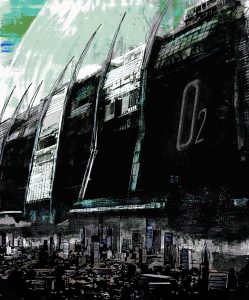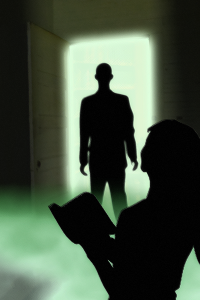An account by Captain Walter Budanov and Samuel Walter, as provided by Jon Hartless
Art by America Jones
Captain Budanov’s diary, whaling vessel Demeter.
October 4th, 1886
Three months now in these ice floes. Petersburg seems but a distant memory, one I despised when there with its drinking and dancing and shallow fun. But now, as I look at great chunks of irregular ice, some as tall as mountains, hemming us in on all sides, I remember only the good times in the city. The warmth. The food. The companionship of men and women on dry land. But these mountains of ice will not allow us to return. If they so choose, they will crush us and send us to our graves. It is all in their implacable will!
~
October 14th
Finally, the ice has cracked! Rivulets are forming, sweeping us along to our ultimate fate–either the open sea and safety, or farther into the ice where the ship, and our hopes, will be crushed. For although we are Russian and resigned to our fate, we still blaspheme by secretly hoping to live. Still, whatever is done is done. We are powerless against destiny. I take great solace from this. The fate of the crew is not on my hands.
~
November 3rd
Astonishment rules today! Even First Mate Zbignew, a stoic who never wept a tear when told of the death of his wife, was amazed enough to shout in disbelief as his incredulous eyes fell upon the impossible this noon time. A boat! A small lifeboat, pushed by the sluggish water, kept on a course toward our vessel by the icebergs that form a narrow corridor.
More astonishment! The boat, when hooked by Ivan and Timor, was full of provisions! Carefully stored vodka, salted pork, rifles and cartridges, hunting knives, blankets, clothes and bags of gold. So much gold! All neatly packed away, as though someone saw his doom approaching yet had time enough to stock the lifeboat before fleeing from his destiny. We shall spend the rest of the day sorting the loot. We may yet die, but we die rich!
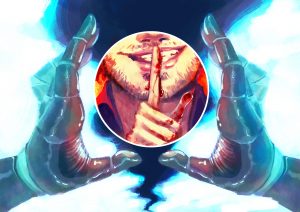
“Yes, yes, yes!” shrieked Krylov in an agony of mental pressure. “We shall fight to the last, though my fate is sealed.”
To read the rest of this story, check out the Mad Scientist Journal: Spring 2017 collection.
Captain Walter Budanov was born in Konigsberg in 1839. He signed on as a cabin boy on the cargo vessel Copenhagen and worked his way up the ranks until achieving his own command, the whaling vessel Demeter, in 1879. The vessel was lost in 1886. No trace of it or the crew have ever been discovered.
Samuel Walter, born in Newcastle in 1852, is wanted for questioning in the matter of two dozen killings over a twelve year period. He disappeared in 1886.
There is no information on any Captain Krylov in either the Russian navy or any private lists.
Jon Hartless was born in the early 1970s. He has had several novellas appear with various digital publishers, (some under the pen names of Arabella Wyatt and Ora le Brocq), while 2017 will see his first release by a traditional publisher, Accent Press. Full Throttle is a steampunk racing novel, inspired by both the era of the Bentley Boys and the ongoing inequality between the rich and the poor in western society.
AJ is an illustrator and comic artist with a passion for neon colors and queer culture. Catch them being antisocial on social media @thehauntedboy.
“The Fatalism of the Automatons” is © 2017 Jon Hartless
Art accompanying story is © 2017 America Jones


